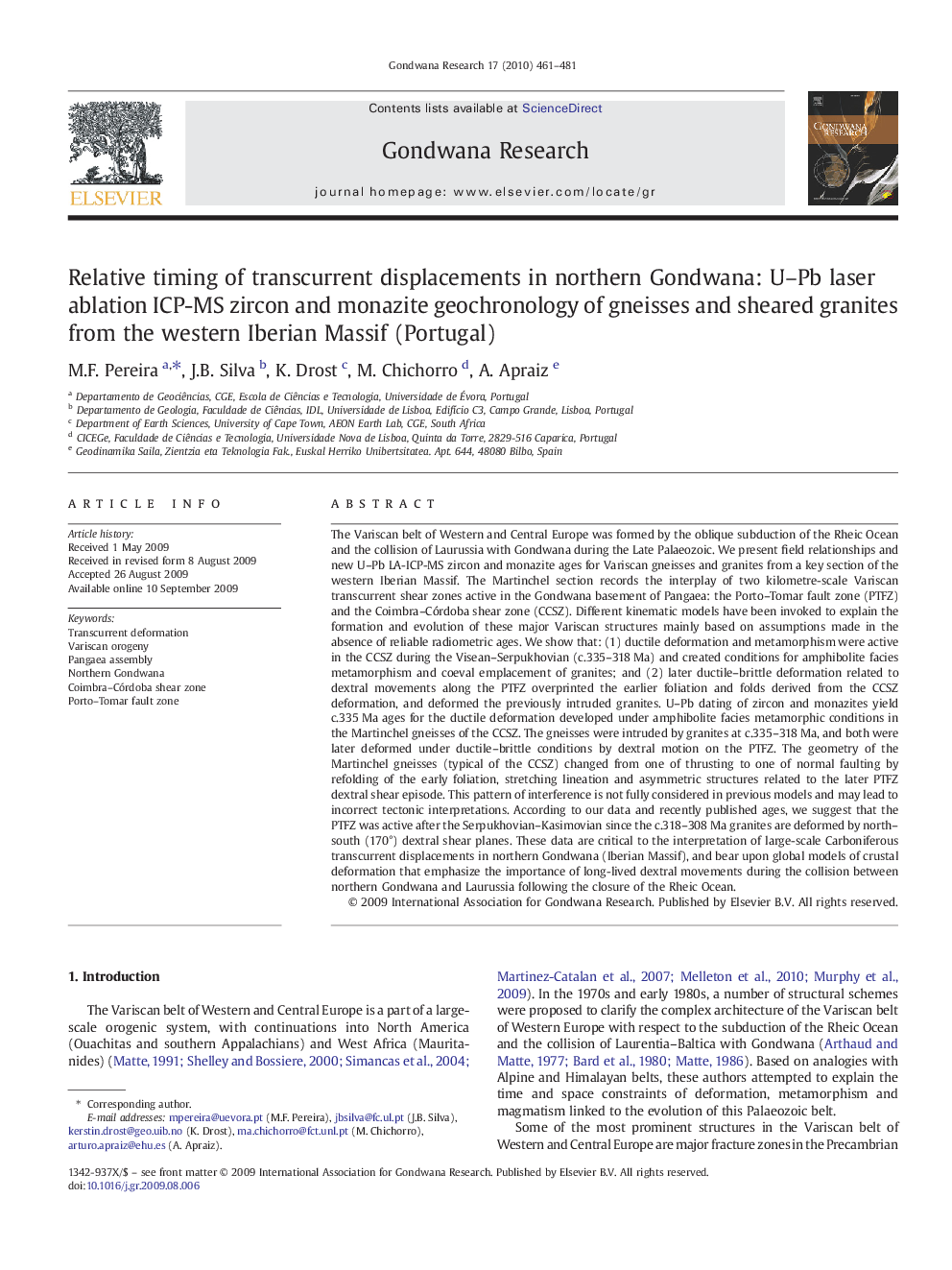| کد مقاله | کد نشریه | سال انتشار | مقاله انگلیسی | نسخه تمام متن |
|---|---|---|---|---|
| 4727244 | 1640149 | 2010 | 21 صفحه PDF | دانلود رایگان |

The Variscan belt of Western and Central Europe was formed by the oblique subduction of the Rheic Ocean and the collision of Laurussia with Gondwana during the Late Palaeozoic. We present field relationships and new U–Pb LA-ICP-MS zircon and monazite ages for Variscan gneisses and granites from a key section of the western Iberian Massif. The Martinchel section records the interplay of two kilometre-scale Variscan transcurrent shear zones active in the Gondwana basement of Pangaea: the Porto–Tomar fault zone (PTFZ) and the Coimbra–Córdoba shear zone (CCSZ). Different kinematic models have been invoked to explain the formation and evolution of these major Variscan structures mainly based on assumptions made in the absence of reliable radiometric ages. We show that: (1) ductile deformation and metamorphism were active in the CCSZ during the Visean–Serpukhovian (c.335–318 Ma) and created conditions for amphibolite facies metamorphism and coeval emplacement of granites; and (2) later ductile–brittle deformation related to dextral movements along the PTFZ overprinted the earlier foliation and folds derived from the CCSZ deformation, and deformed the previously intruded granites. U–Pb dating of zircon and monazites yield c.335 Ma ages for the ductile deformation developed under amphibolite facies metamorphic conditions in the Martinchel gneisses of the CCSZ. The gneisses were intruded by granites at c.335–318 Ma, and both were later deformed under ductile–brittle conditions by dextral motion on the PTFZ. The geometry of the Martinchel gneisses (typical of the CCSZ) changed from one of thrusting to one of normal faulting by refolding of the early foliation, stretching lineation and asymmetric structures related to the later PTFZ dextral shear episode. This pattern of interference is not fully considered in previous models and may lead to incorrect tectonic interpretations. According to our data and recently published ages, we suggest that the PTFZ was active after the Serpukhovian–Kasimovian since the c.318–308 Ma granites are deformed by north–south (170°) dextral shear planes. These data are critical to the interpretation of large-scale Carboniferous transcurrent displacements in northern Gondwana (Iberian Massif), and bear upon global models of crustal deformation that emphasize the importance of long-lived dextral movements during the collision between northern Gondwana and Laurussia following the closure of the Rheic Ocean.
Journal: Gondwana Research - Volume 17, Issues 2–3, March 2010, Pages 461–481